Power politics

Formula 1 finally received the clarification it was looking for after months of negotiation. The newfor-2026 power unit regulations, announced in 2022, certainly point towards a more environmentally sustainable future for the sport. Under the new regulations, no new fossil fuel will be burned and carbon will be derived from non-food sources, genuine municipal waste and even from the atmosphere itself.
Hybrid energy, meanwhile, will provide three times the power compared to the current Formula 1 cars, pushing the maximum power available to more than 1000bhp. All of this, while using 30 per cent less fuel (from 100kg of fuel in 2020 to 70kg in 2026). That target is less than half the fuel used per grand prix in 2016.
The new regulations have gone further still, with lower costs thanks to identification of parts that can be upgraded during the lifecycle of the engine, and less testing. That means fewer hours on track, fewer hours on the dyno in testing, and yet innovation and competition will be as energetic as ever
Cars will also be safer, with the kinetic motor generator unit (MGU-K) to be housed within the chassis.
The number of power units will be limited during a season, placing emphasis on reliability, while less road-relevant technology, such as the MGU-H (harvesting energy from the exhaust gasses), have been dropped.
Finally, the new regulations will also regulate how teams deal with every aspect of their spent materials, encouraging them to recycle wherever possible.
This was certainly a fascinating set of rules, and probably the best of the options that were available. They have been enough to encourage in the new engine manufacturer that was desired from the Volkswagen Group, currently only Audi, although at the time of writing Porsche is still looking at joining its sister company in the competition.
Honda, meanwhile, seems to be rowing back on its decision to end its involvement in
the sport, currently powering the Red Bull to its second World Championship title.


That has left the FIA and Formula 1 in a strong position. The two entities had to tread a thin line between what was realistic and what was popular. In this article we look at the options the two governing bodies had to consider during the negotiations.
Where once power units were restricted to internal combustion engines powered
FORMULA 1 | FUTURE POWER UNITS 8
by fossil fuels, and the only options apart from ignition – spark (petrol) or compression (diesel) – were reciprocating or rotary pistons, configuration and two or four strokes, the choices have multiplied exponentially.
Indeed, the FIA’s former secretary general for sport, Peter Bayer, ran out of fingers as he listed the number of potential options: fossil or synthetic-fuelled spark; compression or rotary internal combustion engines (ICE);
ditto with hybrid elements and / or powered by hydrogen or CNG (compressed natural gas); and purely electric motors, in turn energised by one of three variants, namely battery, hydrogen fuel cell or range-extended battery charged by any of the ICE types listed.

That potentially makes for 10 basic power unit alternatives, each with at least one suboption. It was, as Bayer freely admitted during the FIA’s annual member club conference
Formula 1 will retain its six-cylinder engines but they will be powered by sustainable fuel, will use half the fuel per race than in 2016, will have a higher electrical output than current engines and will run without the MGU-H that is too expensive and not relevant
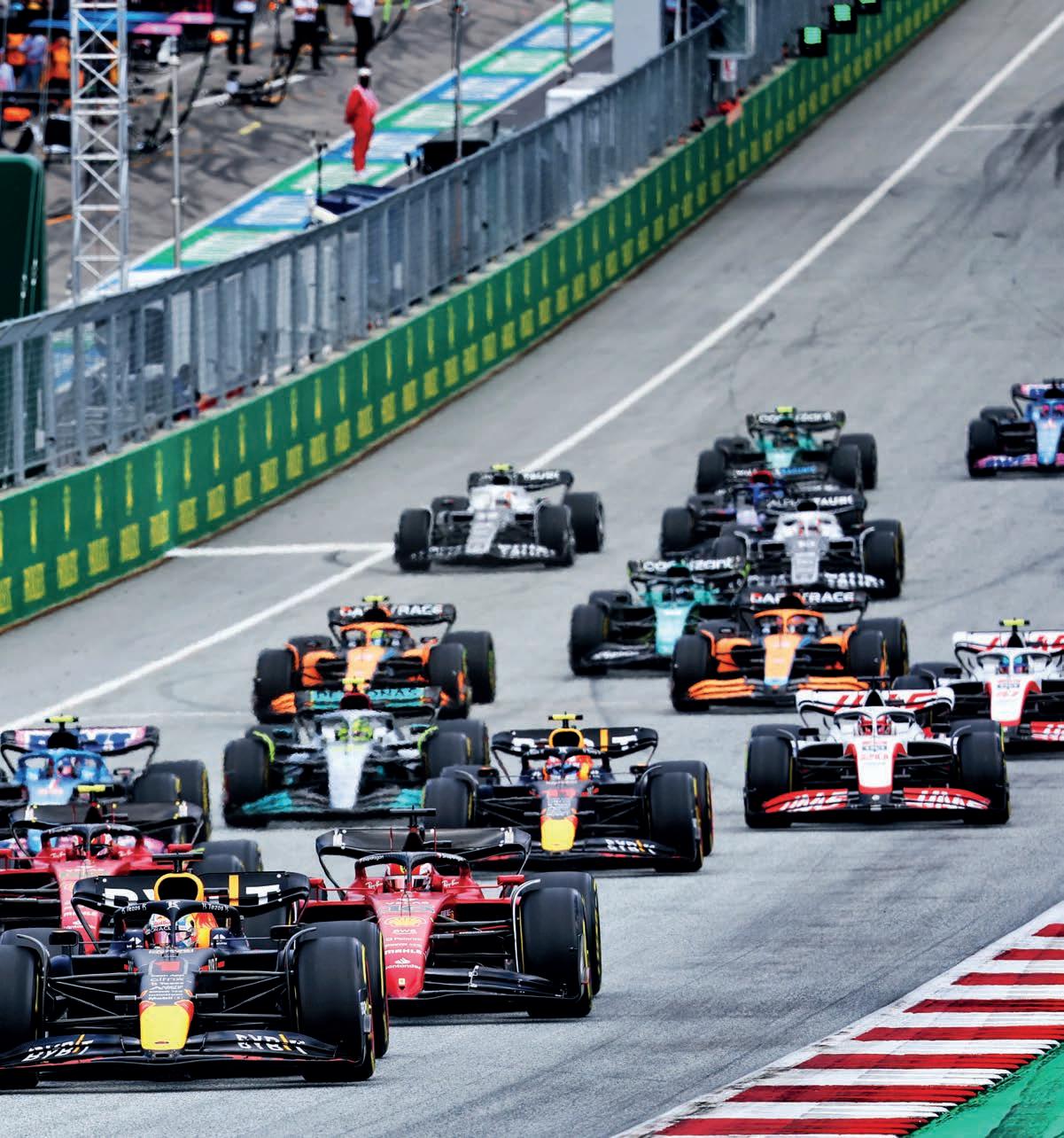
in Monte Carlo in 2021, something of a power unit jungle out there, with none of the options providing a universal solution, whether for sporting, transportation or commuter applications.

Road relevance
The FIA, which holds global responsibility for both motorsport and mobility disciplines, elevated road relevance to the top of its agenda
9 XPB
» It became abundantly clear during the FIA conference that electricity is not the only alternative for future mobility, and that the internal combustion engine will be around for decades to come
and plans to formulate motorsport regulations that ultimately benefit global four-wheeled mobility, in all its forms.
The electric vehicle (EV) boxes are, of course, ticked by Formula E and various batterypowered tin-top series, while next year’s Dakar sees Audi enter its second generation range-extender concept, having already proven the technology in 2022.

That said, it became abundantly clear during the FIA conference that electricity is not the only alternative for future mobility, and that the internal combustion engine will be around for decades to come – regardless of what ecologists and politicians preach – if for no other reason than the world simply cannot generate sufficient affordable electricity and deliver it in sufficient quantities to charging points across the globe. In addition to this, Motorsport Industry Association (MIA) CEO, Chris Aylett, believes that, although consumers are being dictated to by governments to switch to electric, ‘too many nations can’t adapt, can’t afford it. Electric won’t work everywhere.
‘The internal combustion engine is still a very efficient mode of mobility and has been so for 100 years,’ Aylett adds. ‘There is plenty of potential there if we were not in such a hurry to go electric.
‘With regard to using sustainable fuels, I am quite sure we will go forward into the future with an urban electric solution, and a non-urban solution.’
There is another significant factor; 95 per cent of the global vehicle park is ICE-powered, and these cars cannot be scrapped overnight, something politicians – typically elected for five-year spells, and therefore with no need to play long games – conveniently overlook in their determination to shade themselves green. Crucially, 90 per cent of the 85 million cars that will be added to roads this year will be fuel-powered to some degree.
Disciples of electric vehicles predict enormous strides in battery technology over the next few years, often citing mass / power density advances that will reduce weight, cut costs and extend the range of EVs. However, they seldom acknowledge that such technologies apply equally to plug-in hybrid vehicles, and many deny that PHEVs could play a pivotal role in accelerating development of batteries, therefore serving hybrids and electric vehicles equally.
Yet both Renault and Alfa Romeo are currently committed to F1, despite corporate plans to go all-electric for their future product ranges, with the latter’s CEO, Jean-Phillipe Imparato, telling Racecar Engineering that spin offs from F1’s hybrid electrification provided the basis for the brand’s recent extension of its contract with Sauber.
‘The answer came naturally when I met [Sauber MD] Frederic Vasseur some months
before: to bet on Formula 1 as a next step in terms of technological content to fit my product, because Formula 1 is electrified since 2010. For me, in terms of rationale, it feeds the [brand’s] storytelling,’ he says. However, the entire auto industry, including F1, needs to dump fossil fuels and become carbon zero. Yet said public officials cannot even agree on the emission standards needed, let alone provide road maps for achieving it. Compounding the matter is the fact motorsport is not a political priority yet, rather ironically, could provide the technologies required for low or zero-carbon mobility solutions via synthetic fuels.
Poles apart
With F1 being both the most technological and visible of all FIA championships, it is the obvious series to pioneer sustainable fuels, and therefore this element lies at the heart of the sport’s plans for its future PU regulations.
Reaching such an agreement in Formula 1 was highly challenging given all the players have contrasting agendas. On the one hand Renault uses Formula 1 (largely) as a flagship for its range of mass produced econo-boxes, on the other Red Bull enters two teams to sell energy drinks via Formula 1’s popularity, yet aims to be totally self-sufficient.
Sitting between these two extremes are Mercedes and Ferrari, premium automotive brands both with a determination to spend what it takes to prove their technical superiority to the world, particularly on the power unit front.
An example of the conflict reigning between the factions was aired by Red Bull’s Christian Horner and Mercedes motorsport boss, Toto Wolff, during the British Grand Prix weekend in 2021. Asked his preferences for future PUs, Horner said: ‘I think the combustion engine does have a future, so

FORMULA 1 | FUTURE POWER UNITS 10
why not introduce high revving engines
The FIA’s former secretary general, Peter Bayer, admitted there is a plethora of PU options
Audi will use a range extender on its RS Q e-Tron for the 2023 Dakar Rally, an alternative solution to pure electric mobility
» ‘I think the combustion engine does have a future, so why not introduce high revving engines that sound fantastic, and that do it in an environmentallyfriendly manner?’
XPB
Christian Horner, team principal at Red Bull Racing
that sound fantastic, and that do it in an environmentally-friendly manner?
‘I think biofuels and sustainable fuels enable you to do that. F1 could play a key role with the fuels and with the fuel partners we have on sustainability and zero emissions, with a high performance, high revving, emotive engine. I think every grand prix will be packed.’
Wolff, though, immediately disagreed ‘because it’s what we [the older generation] think, but we are not the most relevant generation. When you ask an 18-year old or 22-year old what relevance noise has, most of them consume [F1] via different screens where noise has little or no relevance.
‘I personally like it too, and I would like to have a 12-cylinder that screams down the road,’ Wolff continued, ‘but we are a sport and we are also a business. I think we would lose complete relevance with our partners, sponsors and major stakeholders if we weren’t looking at the environment and the impact that we make.’
See the conflict? One represents an edgy energy drink, the other a premium auto brand. Between them they have dominated the sport since 2010.
To set the ball rolling in order to reach agreement for the F1 regulations, the FIA and Formula 1 convened an engine summit during the Austrian Grand Prix weekend in 2021. In addition to F1 and FIA executives and senior officials, only CEOs of currently committed and potential engine suppliers were present at the meeting, held in the nearby five-star Hotel Steirerschlössl, owned by Red Bull proprietor, Dietrich Mateschitz.
The invitation list – Ferrari president, John Elkann; Mercedes / Renault CEOs, Ola Kallenius and Luca de Meo; Horner representing Mateschitz, plus Porsche / Audi CEOs, Oliver Blume and Markus Duesmann –suggested the purpose was to formulate a top-down strategy and determine what the current suppliers are prepared to invest.

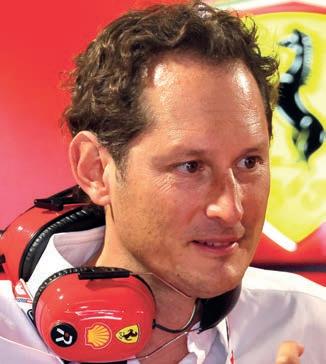
This approach differed from what went before when ambitious engineers, most with little grasp of marketing or economics, trotted out wish lists they submitted to the governing body. These were combined into a set of regulations that delivered the most complex (but admittedly efficient) engines in automotive history, though at eye-watering cost, said to average close to $2m per unit when measured across a season.
The summit agreed the new engines should deliver similar power levels to current units, so 1000bhp overall, but at lower cost (annual budgets of $100m, so around $30m per supplied team, as opposed to three times that). They must also run on zero-carbon fuels and provide substantially increased hybridisation (potentially a 50 / 50 split).
This pretty much sums up the regulations that were approved, and now the engineers ‘just’ have to make it happen.
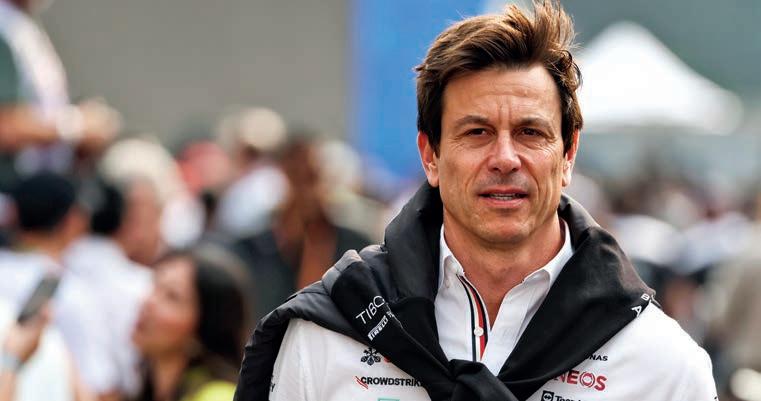
At that meeting, various options were discussed in broad terms, including a switch from V6 to downsized four-cylinder inline units, as per road car trends, and scrapping the horrifically complex and expensive MGU-H units, which sap engine noise. The former was rejected on the grounds of cost, the latter accepted for the same reason.
‘The discussion was what are we doing in the future in terms of engine, because we want to save costs, so we don’t want to reinvent the wheel,’ Wolff (who did not attend the Austrian summit as he is not a director of Mercedes High Performance Powertrains), told the FIA conference.
‘We also want to have an engine that is relevant from 2025 to 2030, and we can’t be old petrolheads with screaming engines when everybody expects us to be going electric. So these engines are still going to be fuelled [by zero-carbon fuels]. We are staying with the current V6 format, but the electric component is going to massively increase,’ Wolff added, clearly pushing the Mercedes corporate line.
Power switch
FIA president, Jean Todt, retired at the end of 2021, handing over to his successor, Mohammed Ben Sulayem. Ben Sulayem now needs to implement the new set of regulations, maintain harmony among the competing teams and manufacturers, while, at the same time, keep a close eye on the selfimposed cost cap that will protect the teams at the back of the grid.
11
Toto Wolff and Christian Horner found themselves in disagreement over the direction Formula 1 should take with its new PUs
Ferrari boss, John Elkann, attended the 2021 Austrian engine summit with his own priorities
Ola Kallenius represented Mercedes at the PU summit
XPB
» Various options were discussed in broad terms, including a switch from V6 to downsized four-cylinder inline units, as per road car trends, and scrapping the horrifically complex and expensive MGU-H units
XPB
XPB
That Formula 1 needs to change its ways is clear. That the ICE is far from dead, equally so. The trick facing the FIA, Formula 1 and all engine suppliers, both present and potential, then, is to manage the switch in such a way that the final direction finds lasting favour amongst fans, sponsors, promoters and broadcasters, who will base their medium to long-term decisions upon a sustainable, biofuelled, hybrid engine formula.
The ultimate irony, though, is that after years of criticism of the current engine formula, 2022 delivered the best racing for many a year in Formula 1, yet its demise is now being widely debated due to external factors, a number of which are outside the sport’s direct control. l
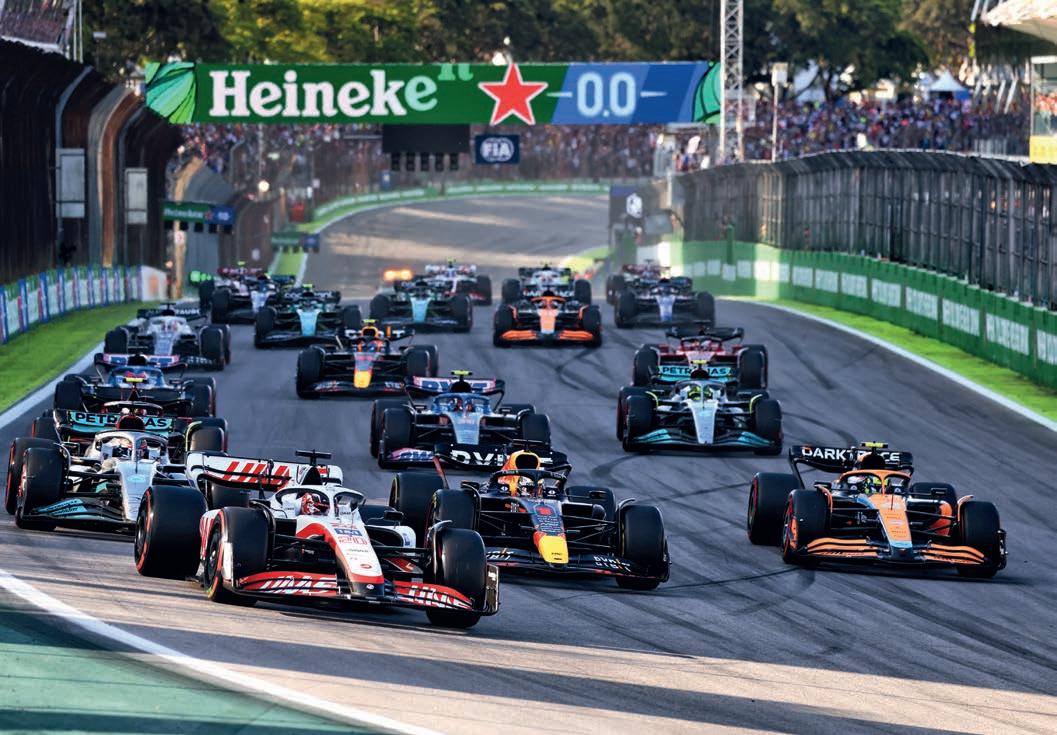
The powers that be
There are already quite a few alternative energy solutions at play in the wider motorsport world, including of course Formula E. Scepticism abounded when in 2011 the FIA conceived the series, its first alternative energy championship. Yet it has gone from strength to strength, this year holding world championship status and boasting seven manufacturers – three more than Formula 1, although Audi, BMW and Mercedes have all now cancelled their FE programmes. There’s even Extreme E, a rally series for electric vehicles.
Meanwhile, F1’s support series, Porsche Supercup, and the European Truck Racing Championship have switched to petrol and diesel biofuels respectively, with Porsche reporting the former required only software updates to co-optimise engine and fuel performance, with output of the GT3 remaining unaffected.
The 2022 World Rally Championship went a step further by integrating biofuels and hybridisation, while WRX’s switch to full electric was delayed by the Covid pandemic.
In 2022, Audi debuted its RS Q e-Tron on the Dakar Rally using a 600bhp, ex-DTM ICE to power an FE-derived motor generator, which in turn charges 52kWh batteries that power two 335bhp FE electric motors. In this configuration,
the car can now complete stages without regular charging, although the plan is for overnight charging via auxiliary generators.
Range extenders could also see use at Le Mans, with a project combining a Mazda rotary engine running at constant speed to charge batteries rumoured as a Garage 56 entry.
However, ACO president, Pierre Fillon, whose club promotes the 24-hour race, believes ‘Hydrogen is one of the best energies for future mobility, and will play a key role in Le Mans in 10 years. We will have zero CO2 emissions, with hydrogen as the top class and e-fuels in the lower classes, and we will stage an exemplary event in terms of social responsibility.’
In May, Toyota chairman, Akio Toyoda, completed the 24 Hours of Fuji in a Corolla powered by a turbocharged, inline, threecylinder engine fuelled by compressed hydrogen, an exercise Bayer labels as ‘super interesting, something we are analysing and studying’.
‘The goal is to be carbon neutral,’ Toyoda said. ‘If all cars become battery electric, one million jobs will be lost in Japan. I want to tell the world there is also this option to become carbon neutral.’
Motorsport now merely needs to introduce a series for hydrogen fuel cell technologies to cover the full spectrum of alternative energies…
FORMULA 1 | FUTURE POWER UNITS 12
»
‘We are staying with the current V6 format, but the electric component is going to massively increase’
Toto Wolff, team principal and CEO at Mercedes
The trick now for Formula 1 is to lead the way in technological development, while at the same time keeping fans, sponsors, promoters and broadcasters happy. No mean feat
XPB
High-end drivetrain technology Made in Germany


































































































Made in ack ted entials tree t an an code al offer.
Be on the fast track with our custommade limited slip differentials and other drivetrain parts for street an racecars. Scan the QR code to get your personal offer.
tr custommade limi differ par ts for s racecars . Sc person
PERFORMANCE makes the difference Drexler Automotive GmbH Postgasse 12 c, d D-94121 Salzweg T +49 851 851 6363 0 mail@drexler-automotive.com drexler-automotive.com
dif ference
Blended learning
Racecar investigates how Mobil 1’s engine oil is offering a performance advantage for Honda-powered Formula 1 teams
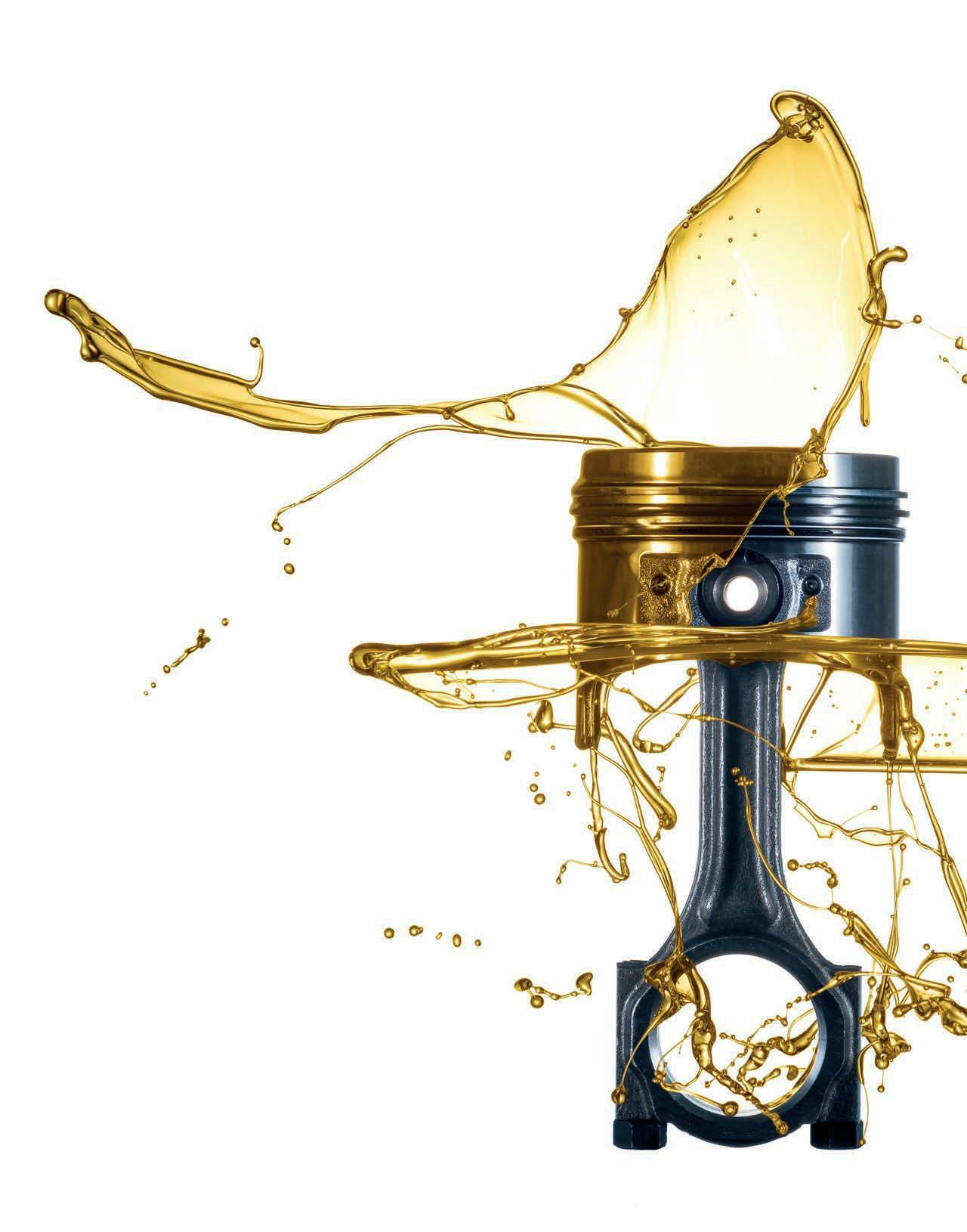 By Stewart Mitchell
By Stewart Mitchell
FORMULA 1 | LUBRICANTS 14
© Htpix14 | Dreamstime.com
Few mechanical systems put as much stress on their components as a Formula1 hybrid power unit. Providing technical solutions in such a demanding environment pushes suppliers to enhance their products and develop new technologies in a bid to yield an advantage over rivals on the track.
The partnership between Honda and the Red Bull Technology group Formula1 teams, Red Bull Racing and Alpha Tauri, has provided a key learning platform and a proving ground for the fuels and lubricants brand, Mobil 1.


The partnership provides Mobil1 with the opportunity to improve its engine fluid technologies, raising the standard of lubricant and fuel performance for its customers, while at the same time delivering higher resilience to contamination and longer service intervals.
Mobil 1 and Honda’s engineers have worked closely with Red Bull Technology since changing from a power unit supplier to a partnership with Toro Rosso in 2018.
‘That shift in the relationship has made a significant difference,’ highlights Honda F1 technical director, Toyoharu Tanabe.
15
» ‘I think the results will bring advantages both to the racing world in Formula 1… and in the consumer car world and with road car engines in general’
Tomek Young, global motorsport technology manager at Mobil 1
Photos: XPB
‘We had many meetings to develop our relationship, which is not only technical but also personal. We have very open communication between Mobil 1 engineers and Honda engineers.
‘Reviewing the test data, we initially looked at the direction for development and a new lubrication solution for the 2021 Honda power unit, and this provided us with higher performance for the Red Bull Racing and Scuderia Alpha Tauri Formula 1 teams.’
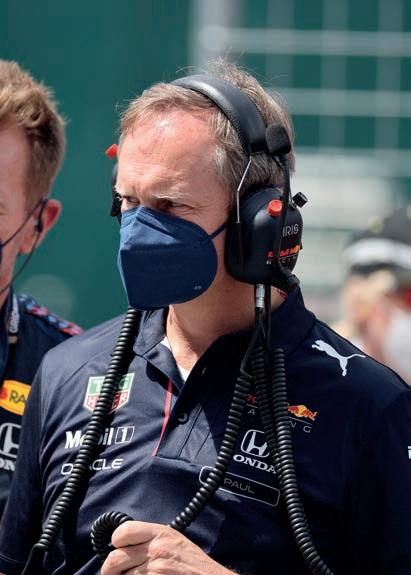
Blend development
Mobil 1’s lubricant formulation for the Hondapowered Red Bull Technology group F1 teams was led by Tomek Young, Mobil 1’s global motorsport technology manager.
‘The engine oil interacts with many parts, and we’re careful when changing its chemistry,’ highlights Young. ‘When we have a proven formula, moving to a new generation poses potential risks. Before we change anything, we must be confident that the performance gains are worth the risk of potential reliability issues, which carry a heavy penalty.’
Mobil 1 begin with computer modelling and simulating the lubrication regime in the digital world. Once the company is confident with the oil’s performance in simulation, it tests it in a laboratory environment before moving to single-cylinder test rigs with some small batches of the new blend. Following that, the formulation is further refined where needed and goes on to Honda for its engineers to put in their complete power unit test stands. Only after passing all these tests does it go into the racecar.
‘We use much more fuel with Honda off track than we use on the track,’ explains Young of the process. ‘We have done a lot of testing to push the boundaries of what’s possible with the race engine oil and have a unique molecular composition of products for this Honda Formula 1 power unit engine oil not seen anywhere else.
‘There are traditional elements used in race engine oil such as those that offer anti-wear properties, including boron, zinc, phosphorus and sulphur. Some base stocks are also traditional.
‘We asked the question: can we change the composition completely? We started to look in some unusual places for components and compounds that would improve the oil in a Formula 1 application and make it even more effective. We searched for the characteristics we wanted in many different applications, including the cosmetics industry, and we brought in some new components to our race oil formulation.

‘Specifically, we were able to eliminate some of the metals that were previously used, and we’ve been able to limit the content of others, making this oil stand out in sustainability as well as performance.’
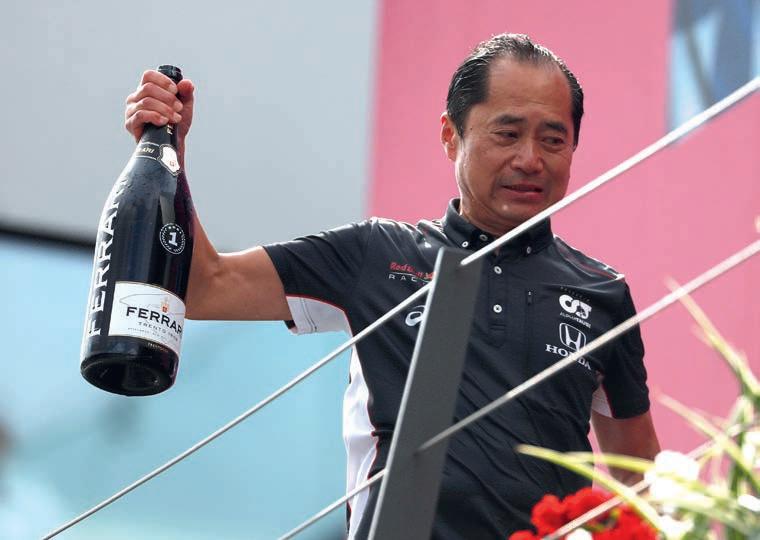
The Mobil 1 oil poured into the Hondapowered Formula 1 teams’ cars at the Baku round in 2021 brought together many years of work on multiple iterations, as Young explains: ‘That blend culminated eight years of lubrication research and development.
It gave the Honda-powered race teams a performance advantage on track, and helped us improve our product for our commercial customers, too.’
Performance act
That’s all well and good coming from the supplier, but how do you quantify a performance advantage from a lubricant? The primary driver for oil in the Formula 1 engine environment is the power unit’s performance, and to maximise that is to minimise friction losses. Internal combustion engines are energy conversion devices –they convert chemical energy in the fuel at the injectors into mechanical energy at the engine output shaft.
A significant percentage of the chemical energy delivered to the combustion chamber is lost to mechanical friction between components, the most significant of which are the piston and cylinder interface, and the con rod and big end bearing assemblies.
Developing an oil to provide a higherperforming lubrication regime with less friction in these areas offers a considerable contribution to engine performance.
Reducing friction also has a knock-on effect in other areas of engine efficiency, such as lessening the amount of energy required to carry out the non-firing strokes, known as pumping losses.
Additionally, wear on the engine is reduced, giving it the ability to run at a higher-performing mode for more miles.
FORMULA 1 | LUBRICANTS 16
»
‘Our relationship… is not only technical but also personal. We have very open communication between Mobil 1 engineers and Honda engineers’
Toyoharu Tanabe, technical director at Honda F1
Paul Monaghan, Red Bull Racing Honda chief engineer of car engineering
Honda F1 technical director, Toyoharu Tanabe
Since Technical Directive 37 was introduced at the Monza, Italy round of the 2020 championship, restricting the number of engine modes teams can use, the ability to change into different performance modes to manage energy and race strategy is gone. As such, teams want to run in the most performant mode for the entire weekend, provided the powertrain can handle it. Reliability is therefore key, and can be aided by a higher-performing oil, making it easier for teams to observe the three power units per year regulation.

‘Friction reduction improves the engine considerably,’ says Young. ‘Efficiency improvements form an effective route to enhance our challenge for this season’s championship, and forthcoming seasons championship battles.’

Thermal conductivity
The ability to carry heat is one of the critical functions of engine oil, and that function is one that Mobil 1 has been investigating in great detail with Honda and carefully optimising for the Formula 1 application.
‘We try to maximise the heat capacity per molecule of the lubricant,’ notes Young. ‘However, the oil must not only have heat capacity, but also a high thermal conductivity, releasing the heat as it passes through the heat exchanging device quickly and efficiently. Improving the conductivity of the oil is an effective route to lowering the running temperature of the engine.’
The 2021 engine oil was able to withstand significantly higher temperatures than its predecessor, and that has potentially huge knock-on effects for the design of other components on the car. For example, the Honda-powered cars now have scope to design a smaller, more efficient engine and consequently improve the car’s aerodynamics, the most performancedependent factor in current Formula 1.
‘We’re not yet taking full advantage of that ability, but we have done some work,’ notes Paul Monaghan, Red Bull Racing Honda chief engineer of car engineering. ‘Mobil 1 made the oil performance so high that we could potentially run the power unit even harder down the road, and much more optimisation of the power unit, aerodynamics and car operation will be possible.
‘When we do optimise the car, we will know how much of a difference the oil can make, and we are confident it can make a tangible difference in terms of the overall performance of the car, primarily in the cooling configuration.
‘The new oil may affect the decisions made for the next year’s car. For now though, it is fair to say these are early days in terms of establishing just how high we could push the oil on the car.
17
Since the introduction of Technical Directive 37, teams want to be able to run at the highest performance mode possible at all times

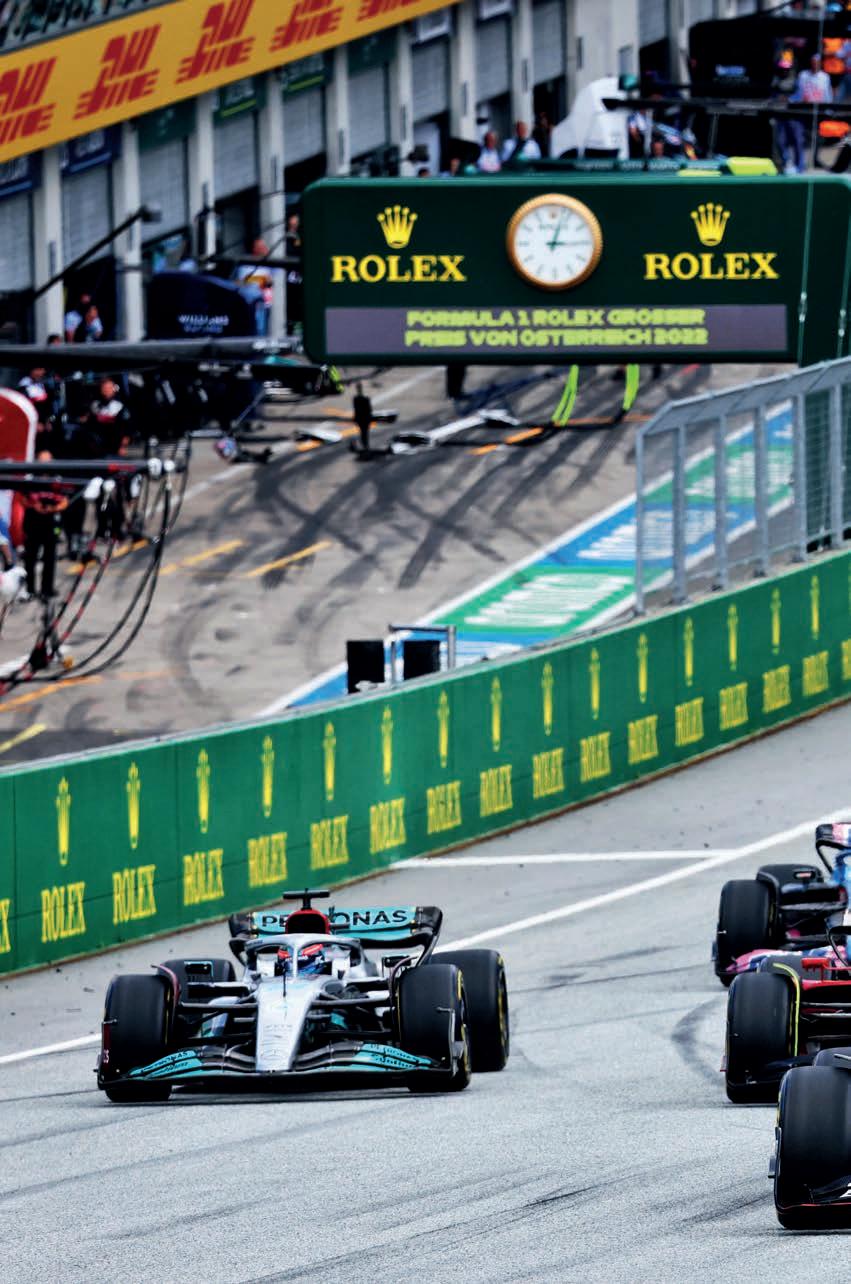 By DIETER RENCKEN
By DIETER RENCKEN


























































 By Stewart Mitchell
By Stewart Mitchell






